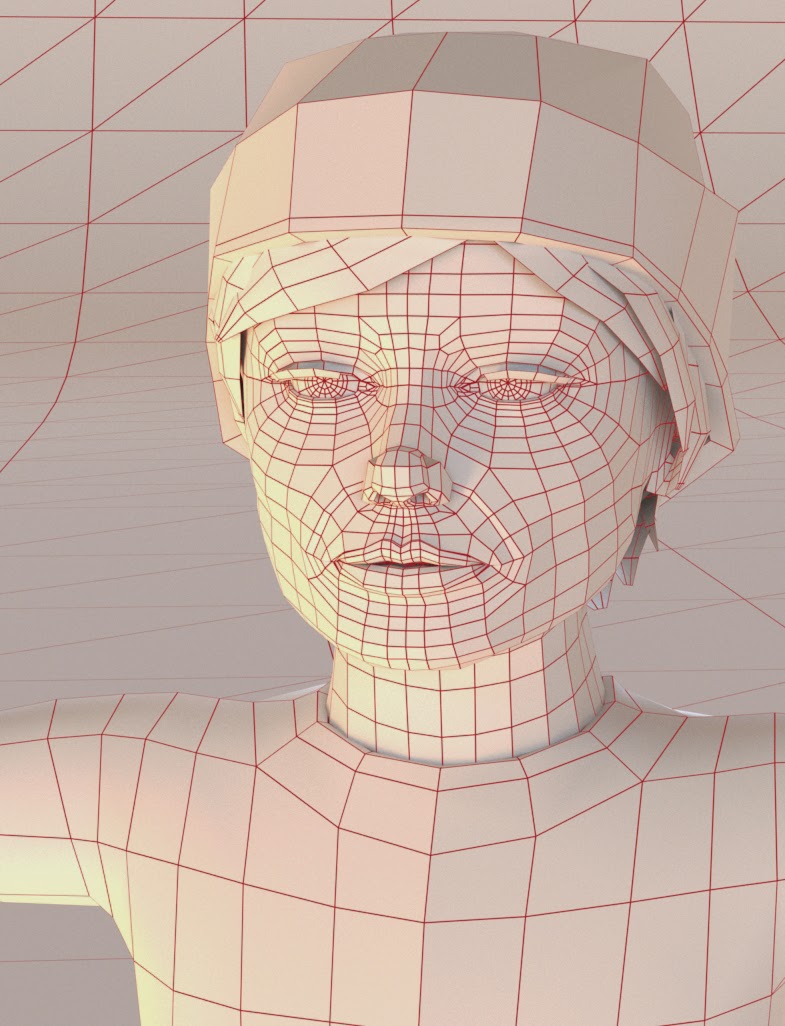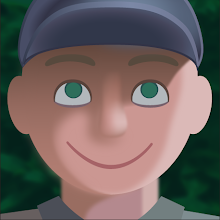 |
| Pallas model |
This is a character of medium complexity: halfway between a smiley face and a photographic face. Key facial details can be included to make a character more relatable. For example, when you add eyebrows to a smiley face, the range of possible expression is increased. The face that previously could only express happiness or indifference, can now feel anger, sorrow, mischief, relief. Below is a list of key skin folds that can assist in maximizing character depth.
 |
| head-modeling details |
palpebral sulcus - This is a furrow above the eye that holds extra skin, needed to close the eye. The furrow disappears when either the eye closes or the brow is raised. On Asian eyes, this sulcus is hidden by the epicanthic fold. In modeling, the sulcus can easily be created by tucking in one of the edge loops. When the eyes are in a half-open state, the presence of the sulci can help make the character look more relaxed / less alert.
lateral canthus - This is a groove on the outside of the eye where the upper and lower eyelids meet. It's minimized when the eye is opened wide.
nasolabial sulcus - This is a furrow that separates the nose and lips from the cheeks. Its the only skin fold represented in the aforementioned smiley face example (at the corners of its mouth), and beneficial for highlighting smiles and snarls.
oral commissure - This is the corner of the mouth where the top and bottom lips meet. In modeling, it's necessary to tuck the edge loops of the lips into these corners. Otherwise, the mouth looks strange and inhuman.
next: Pallas texturing






No comments:
Post a Comment